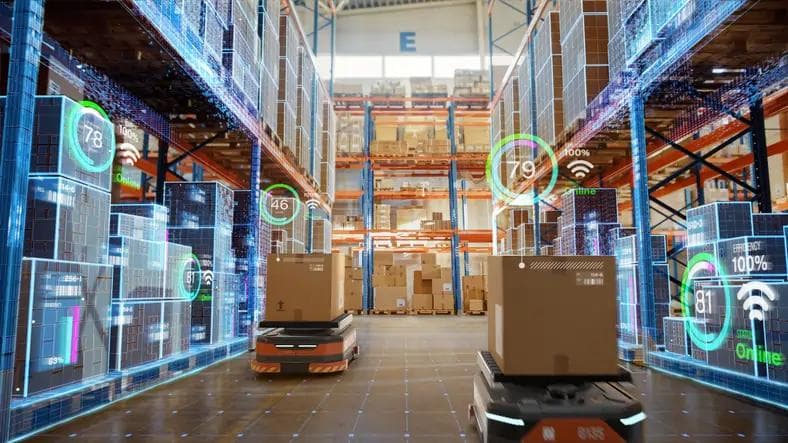Work-Life Balance in 2025: Navigating the Future of Work
Work-Life Balance in 2025: Navigating the Future of Work
Published by Jessica Weisman-Pitts
Posted on February 21, 2025

Published by Jessica Weisman-Pitts
Posted on February 21, 2025

The workplace landscape of 2025 is experiencing a fundamental transformation, shaped by rapid technological advancements, shifting employee priorities, and the long-term impacts of global workplace shifts. Employees today are placing greater emphasis on flexibility, mental well-being, and sustainable work practices, pushing organizations to rethink traditional work structures. Rigid work schedules are giving way to more dynamic, adaptable structures that cater to individual needs, including remote work, hybrid setups, and AI-driven efficiency. Employees and organizations alike are adapting to new work structures that prioritize well-being, efficiency, and flexibility. In this evolving era, several key trends are shaping how we approach the intricate balance between professional commitments and personal life, demanding a more thoughtful and adaptive approach to workplace policies.
The Primacy of Work-Life Balance
Work-life balance has overtaken salary as the top concern for employees. According to Randstad's latest WorkMonitor report, 83% of workers now prioritize work-life balance, compared to 82% who prioritize salary. This shift reflects a growing emphasis on personal well-being and time management in workplace priorities
The current state of work-life balance presents challenges and opportunities. A staggering 66% of Americans report struggling with maintaining balance, while 77% have experienced workplace burnout. These statistics highlight the need for organizations to not only reassess their workplace policies but also to adopt proactive measures that support employee well-being. To combat burnout companies are increasingly investing in mental health resources, workload management tools, and flexible scheduling options. Additionally, fostering a culture of open communication and setting realistic expectations for work hours can help employees maintain a healthier balance between their professional and personal lives.
Personalized Employee Benefits: A Tailored Approach
Gone are the days of one-size-fits-all employee benefits. Companies are increasingly adopting personalized benefits packages, including flexible work schedules, mental health support, and concierge services tailored to individual needs. According to Best Upon Request, these customized benefits enhance employee satisfaction and boost productivity by allowing workers to operate in ways that best suit their lifestyles. A working parent, for example, may appreciate flexible hours for school pick-ups, while another employee may value mental health days to recharge. This growing emphasis on personalized benefits underscores the importance of addressing employees' diverse needs.
The Rise of Flexible Work Arrangements
Hybrid work has emerged as the dominant model for achieving work-life balance. Recent data indicates that 52% of workers prefer a mix of remote and in-person work. This preference for flexibility is more than a passing trend—by 2025, an estimated 32.6 million Americans will be working remotely, marking a significant shift in workplace structure. Employees are increasingly drawn to the autonomy that hybrid work offers, allowing them to better manage personal commitments while staying engaged with their professional responsibilities. Organizations that embrace hybrid work models are also recognizing the cost benefits, including reduced office expenses and increased employee retention. However, challenges remain in ensuring that remote workers feel equally valued and included in company culture, requiring thoughtful leadership and inclusive policies to foster collaboration and connectivity across different work environments.
The Productivity Paradox
Contrary to initial concerns about remote work's impact on productivity, research from Forbes reveals that 61% of employees report higher productivity when working from home, while 34% maintain equal productivity levels compared to in the office.. These findings indicate that flexibility, when implemented with the right tools and management strategies, can lead to increased efficiency, job satisfaction, and better overall performance. Companies that invest in clear communication, performance metrics, and employee engagement initiatives are more likely to see positive outcomes from remote and hybrid work models.
Generational Perspectives on Flexibility
Different generations approach work-life balance with varying expectations. Recent studies indicate that Gen Z workers place a high value on flexibility, with 65% identifying it as their most desired benefit after salary. Millennials and Gen X employees also increasingly seek adaptable work arrangements. Understanding these generational differences allows organizations to craft policies that resonate with a diverse workforce.
Technology's Role in Balance
The integration of artificial intelligence and automation continues to reshape how we work. According to Gartner's future of work trends, the key focus for 2025 includes AI integration, employee well-being, and engagement initiatives. These technological advances are helping employees work more efficiently while maintaining better boundaries between work and personal life.
AI and Automation: Enhancing Productivity
AI and automation are reshaping workplace efficiency, allowing employees to focus on more meaningful work. The use of AI-powered tools to streamline workflows, improve task management, and optimize scheduling can lead to better work-life balance. However, companies must ensure that AI is implemented in ways that support employees rather than overwhelm them. Striking the right balance between automation and human input can prevent technology from becoming an additional stressor.
Mental Health and Well-being
The emphasis on mental health has become central to work-life balance discussions. Organizations are implementing comprehensive well-being programs that include mental health resources, stress management workshops, and regular check-ins. This holistic approach recognizes that true work-life balance extends beyond scheduling flexibility to encompass overall employee wellness.
The Future of Workplace Balance
Looking ahead, HRTech Edge reports that 81% of workers now consider remote work options as their top priority when evaluating job opportunities, followed by salary (77%) and flexible schedules (72%). This hierarchy of preferences is reshaping how organizations approach talent acquisition and retention.
Companies that succeed in the new workplace paradigm will be those that can effectively balance employee preferences for flexibility with organizational needs for collaboration and productivity. This includes developing clear policies around hybrid work, investing in digital infrastructure, and creating inclusive cultures that support diverse working styles.
Sustainable Work Practices
Organizations are increasingly recognizing that sustainable work practices are essential for long-term success. This includes implementing policies that prevent burnout, encourage regular breaks, and respect personal time. The goal is to create an environment where employees can maintain high performance while preserving their well-being.
The Impact on Organizational Culture
As workplace flexibility becomes standard, organizations must evolve their cultures to support these new ways of working. The HR Dive analysis suggests that companies need to carefully manage different work arrangements to prevent the emergence of a "hybrid hierarchy" that could affect team dynamics and collaboration.
Shaping the Next Era of Work
Work-life balance is undergoing a fundamental transformation, driven by the growing demand for flexibility, the prioritization of well-being, and the integration of technology to optimize workflows. Organizations that embrace these changes will not only attract and retain top talent but also create more resilient, productive, and engaged workforces. As flexible work arrangements become standard practice, businesses must adopt a proactive approach—one that ensures equitable opportunities for all employees, prevents the emergence of a "hybrid hierarchy," and fosters an inclusive workplace culture.
Investing in digital infrastructure, establishing clear hybrid work policies, and reinforcing employee well-being initiatives will be critical for long-term success. Companies that prioritize a balanced approach—one that aligns employee preferences with business objectives—will cultivate a workforce that is both satisfied and highly effective. Moreover, sustainable work practices, such as structured time-off policies, mental health support, and workload management strategies, will become key differentiators in employer branding and workforce retention.
Ultimately, the future of work-life balance is not just about allowing flexibility but about fostering an environment where employees can thrive professionally without compromising their personal lives. Organizations that recognize this will be better equipped to navigate the future of work, ensuring they remain competitive, innovative, and adaptive in an ever-evolving professional landscape.
Explore more articles in the Business category











